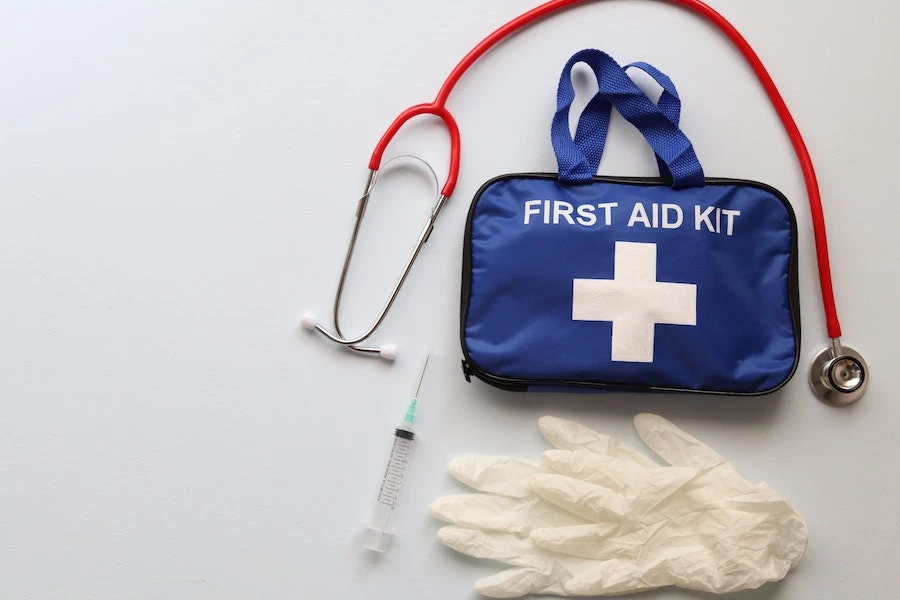Learning life-saving skills in 2023 is important. It can help you prepare for various situations that may arise, from emergency medical situations to accidents on the job and even drowning.
You don’t need to be a health professional to learn these skills; they’ll give you the confidence to act in situations that need it most. Hopefully, you’ll never need to use them in a real-life scenario, but it’s good to know how to respond quickly and efficiently in an emergency.
Automated External Defibrillator (AED)
An automated external defibrillator (AED) is a small, battery-operated device that can help save people’s lives with out-of-control heart rhythm. They use electrode pads to detect and analyze electrical activity in a person’s heart.
They then determine whether the heart rhythm is life-threatening, such as ventricular fibrillation (VF). If so, they can deliver an electrical shock through the cables and adhesive pads on the victim’s chest.
An AED is a life-saving tool that anyone can use. It is surprisingly easy to use and requires little to no training. It is also one of the most effective ways to help save a life.
BBP Bloodborne Pathogen Course
If you work in the healthcare industry, a BBP bloodborne pathogen online course will help you be prepared to take care of others in a medical emergency. It will also teach you how to handle sharps, dispose of contaminated materials, and correctly use PPE (personal protective equipment).
Occupational exposure to blood and other potentially infectious materials is a common problem in many healthcare environments. The CDC estimates that 5.6 million workers in the healthcare industry and related fields are at risk of regular exposure to these pathogens.
This course is a quick, convenient, and easy way to learn about the rules and guidelines of OSHA bloodborne pathogen training. Upon finishing this course, you’ll receive an official certificate and a pocket-sized ID card.
First Aid
When someone is injured or becomes ill, basic first aid can keep them breathing until paramedics arrive. It can also reduce their pain or minimize the effects of an injury until they receive medical care.
This may mean the difference between life and death for them.
Benjamin Briu, a paramedic and member of the New York City Fire Department, says that you don’t have to be a medical professional to help people hurt in accidents. “Everyone can learn a little bit of first aid,” he says.
Learning first aid skills can be a rewarding experience, helping you feel more comfortable in situations where you might need to act quickly and without hesitation. In addition, the confidence you gain is valuable for surviving any emergency.
Using The Bandage
A bandage is a key tool for helping an injured person heal. It can stop bleeding and protect the wound from dirt and water.
Use the right bandage for your injury. For minor cuts and scrapes, a soft-stretch ointment can help keep the wound clean and moist, which helps speed healing.
Apply the bandage firmly but not so tight that it restricts circulation. As a result, fingers and toes may become pale or blue, indicating poor circulation.
Wrap the bandage around the affected limb or body part, applying a spiral turn every few centimeters. Repeat the turns until the dressing or padding is fully covered. Secure the bandage with a safety pin or adhesive tape.
Use of EpiPen
An EpiPen is an epinephrine auto-injector used to treat severe allergic reactions (anaphylaxis). Epinephrine quickly reverses symptoms of anaphylaxis by calming the immune system and opening airways in your lungs.
An anaphylactic reaction is very serious and can even be fatal if left untreated. But you can help a friend or loved one who is experiencing an allergy by knowing how to use an EpiPen and keeping it handy.
First, remove the device from its clear carrier tube. The blue safety cap should point up.
Then, hold the device with the orange tip toward your child’s thigh and the blue cap away. Make sure to count out loud while you’re administering the injection.
After administering the shot, your child may experience a brief shaking. This is normal, but do not panic. They will calm down after a few minutes.

